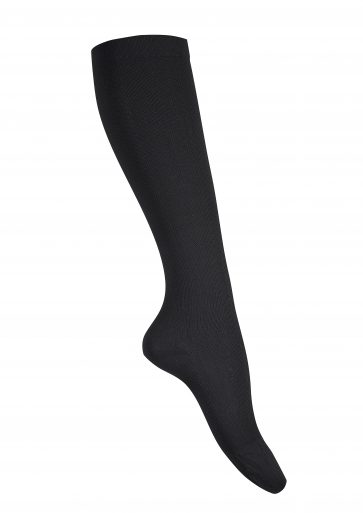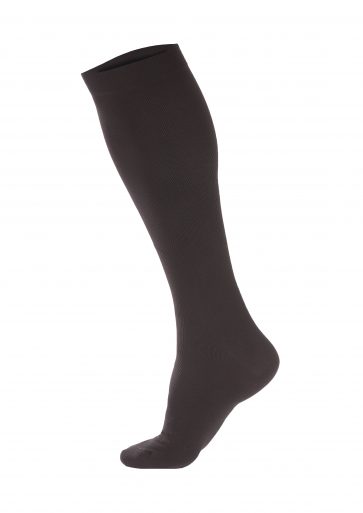Benefits of Compression
Compression socks are recommended for various health problems that develop due to poor or reduced circulation in the limbs. So do compression socks work? Our simple guide to compression gives you a thorough overview of the benefits of compression socks, including how wearing compression clothing can help living with a range of health conditions more comfortable.Daylong recommends:
How does compression work?
If fluid starts to build up in your arms and legs, or blood starts to pool in your veins, your limb becomes painful and swollen. The risk of a complication such as a blood clot increases. Compression socks and other professionally made compression clothing apply gentle but firm and consistent pressure across the surface area of the skin. So compression works by: Preventing further tissue expansion and, together with the action of the muscles, helps to encourage fluid to re-enter the circulation and then get back out of the limb and towards the heart. Reducing the diameter of capillaries and smaller blood vessels near to the skin’s surface. These are less likely to distend and become varicose if you are standing for long periods. The added overall pressure also helps to reduce the diameter of the larger, internal veins. These are also less likely to distend, and there is less chance that the valves in the main veins will collapse.When to wear compression hosiery
Correct compression treatment can help to reduce swelling by pushing the blood and fluid back towards the heart. This helps with:- Varicose veins: wearing good quality compression socks or compression tights during the day can help squeeze your lower legs, encouraging blood to return to your heart, so reducing the aching and swelling.
- Tired and aching legs: discomfort in the legs due to congestion in the veins or pooling of blood can be helped by wearing lightweight compression stockings or support tights.
- Deep vein thrombosis (DVT) treatment: professionally fitted compression socks and compression tights are recommended for people who have had a DVT as a precaution against developing complications. These need to be worn daily, and sometimes also at night, for a minimum of two years after the DVT.
- Deep vein thrombosis prevention: if you have had a DVT in the past, or you are considered particularly at risk, compression socks are recommended whenever you travel by air and whenever you are going into hospital, or are going to be immobile. Your doctor and pharmacist can also help with advice on how to manage both situations.
- Leg ulcers: these often arise on the lower leg, around the ankle. Apart from keeping the ulcer clean and free from infection, the main treatment is compression. A strong elastic and graded compression sock or stocking is the best and will help accelerate the healing process.
- Lymphoedema: this can develop in the arm or the leg after an operation connected with cancer treatment. If lymph nodes need to be removed, this can affect the way fluid drains out of the limbs. Lymphoedema in the arm is common after breast cancer surgery, for example. A compression sleeve can help fluid to drain back to the heart, reducing swelling and pain.
- Pregnancy: compression garments can’t help to improve all the aches and pains that develop in late pregnancy, but wearing good compression stockings or support tights can help you feel a lot more comfortable and may help protect against varicose veins.
Medical evidence for the benefits of compression
For some people and for some conditions, there are risks to using compression. These risks are:- Research amongst flight attendants showed that wearing light level support stockings and compression tights resulted in a significant reduction in tired, aching legs with discomfort and swelling also reduced.1
- Several studies have shown that wearing correctly fitted compression socks and compression stockings can prevent post-thrombotic syndrome, a serious and sometimes life-threatening complication of deep vein thrombosis.2, 3
- Professionally manufactured compression garments, made to prescription, have been shown to reduce healing time in leg ulcers.4
- In cases of serious injury, such as spinal cord injury, where patients are unable to move their legs, using medical grade compression garments helps to keep the leg veins in better condition, reducing the risk of deep vein thrombosis.5
- Compression, prescribed as part of complex decongestive therapy for lymphoedema, has been shown to reduce pain and swelling and increase the use of the hands and fingers.6


